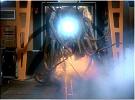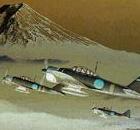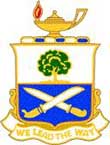Apollo11
Posts: 24082
Joined: 6/7/2001
From: Zagreb, Croatia
Status: offline

|
Hi all,
quote:
ORIGINAL: jwilkerson
There were more factors than just the jet stream ...
quote:
He reviewed the pros and cons over and over. Misjudg-
ing it would mean unprecedented losses.
Pros:
a. accuracy, bomb pattern
b. greatly improved bomb capacity due to less fuel
required to climb to high altitude
c. less strain on still troublesome engines due to
shorter climb
d. eliminate 200 MPH head wind at altitude
e. pressurization problems eliminated
f. fly under clouds (possibly)
g. better radar resolution
h. element of surprise
i. Arnold wanted results
Cons:
a. fighters (maybe)
b. flak (maybe - Japan's AA guns optimized for high
altitude)
c. failure would mean an end to career and serious
setback to 20th Air Force
LeMay was most worried about the flak:
quote:
Only LeMay and a few operations duty types were
staying up. After a brief exchange of small talk, LeMay told
McKelway,
I'm sweating this one out myself. A lot could
go wrong. I can't sleep. I usually can, but not
tonight. If this raid works the way I think it will
we can shorten the war.
In a war you've got to try to keep at least
one punch ahead of the other guy all the time. A
war is a very tough kind of proposition. If you
don't get the enemy, he gets you. I think we've
figured out a punch he's not expecting this time.
I don't think he's got the right flak to combat
this kind of raid and I don't think he can keep
his cities from being burned down - wiped right
off the map. He hasn't moved his industries to
Manchuria yet, although he's starting to move them,
and if we can destroy them before he can move them,
we've got him. I never think anything is going to
work until I've seen the pictures after the raid,
but if this one works we will shorten this damned
war out here.(32)
Link http://www.globalsecurity.org/wmd/library/report/1986/CTJ.htm
Thanks for info - I am still DLing that huge 100+ MB PDF... 
quote:
As to lower level day raids ... page 634 of volume 5 referenced in my first post above "B29s went in at lower levels than in days strikes at heavily defended targets, at altitudes from 10,000 to 18,000 feet" [ these were the April B29 strikes against Kyushu airfields in support of Okinawa campaign ]
Page 637 ... " altitudes ranging from 12,000 to 20,500 feet" [ these were daylight raids on Nagoya/Mitsubishi ]
Page 640 ... " unusually low for a day light strike ... altitudes from 13,650 to 18,000 ... " [ Kobe on 5 Jun 45 ]
Page 649 ... " over Tachikawa ... bomb visually from 12,000 feet"
None of this is to "prove" there should be an invariable flak gap ... but to offer up possible explaination as to why there might be one in the game. I'd suspect that LeMay's fire bombing attacks, in part, exploited a temporary hole in the defenses, which like most tactical exloits can be adjusted for ( eventually ) by the defenders ... looking at all the B29 attacks LeMay over saw .. it seems that Japanese flak was rarely effective at any altitude. Perhaps their most effective defense was 25 May Tokyo night attack in which 26 B29s were destroyed by all causes though crews reported the heaviest flak of the campaign ( page 639 )
RGR.
But in WitP we have gap from 0 ft to 7000 ft (or 9000 ft) for heavy AA guns.
Attacking from 12000 ft (in your examples) doesn't seem so much unreasobable when enemy was almost on his knees late at war whilst in WitP we can attack almost with impunity from mere 6000 ft when hundreads of AA guns are willing and able and ready to counter it (but they can't due to "gap limit")...
BTW, are there any sources to give us data how strong was Japanese AA at those locations you mention (i.e. how many gun barrels they had there)?
- Nagoya/Mitsubishi
- Kobe
- Tachikawa
Leo "Apollo11"
_____________________________
 Prior Preparation & Planning Prevents Pathetically Poor Performance! A & B: WitW, WitE, WbtS, GGWaW, GGWaW2-AWD, HttR, CotA, BftB, CF P: UV, WitP, WitP-AE
|
 Printable Version
Printable Version




















 New Messages
New Messages No New Messages
No New Messages Hot Topic w/ New Messages
Hot Topic w/ New Messages Hot Topic w/o New Messages
Hot Topic w/o New Messages Locked w/ New Messages
Locked w/ New Messages Locked w/o New Messages
Locked w/o New Messages Post New Thread
Post New Thread